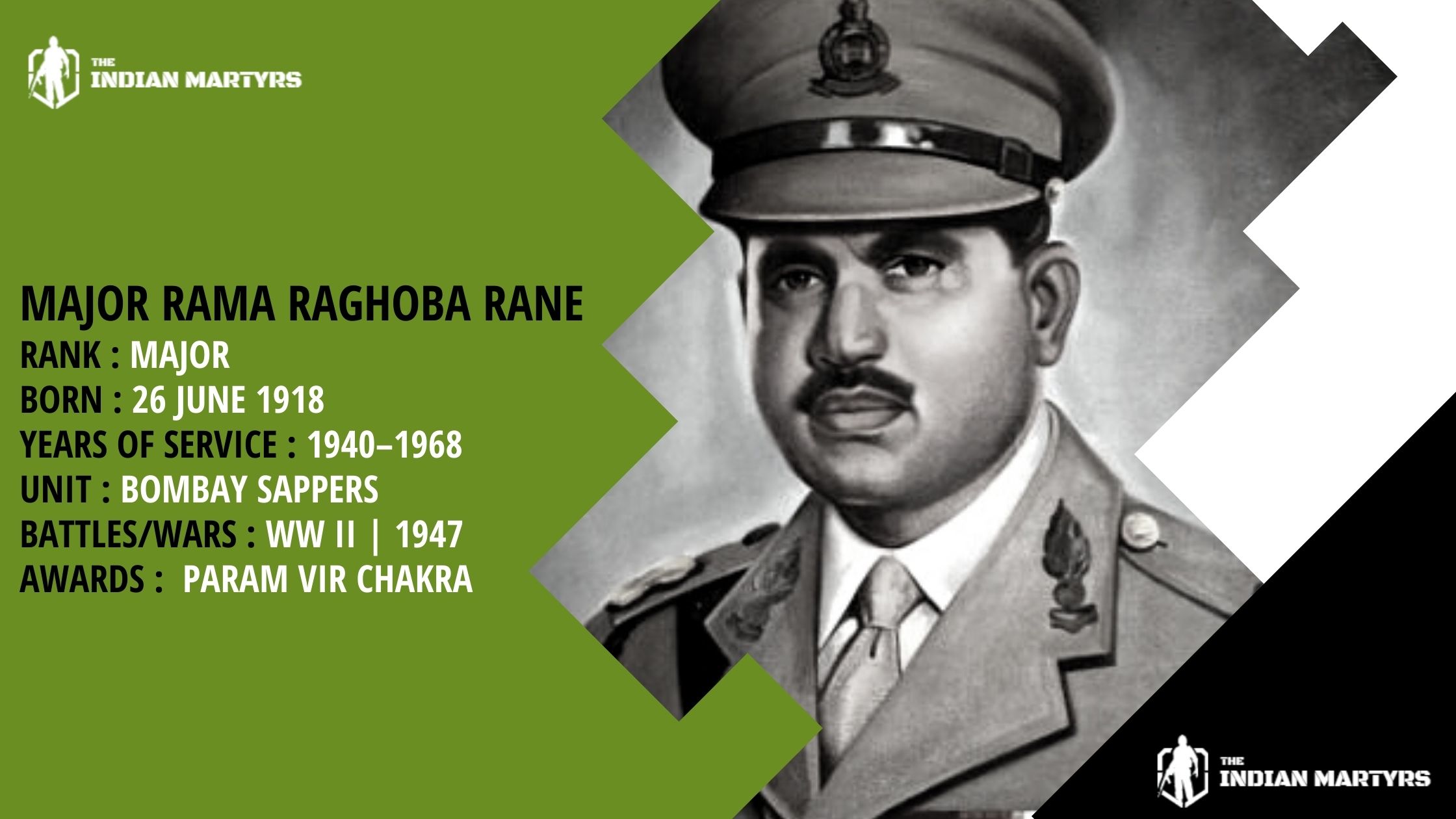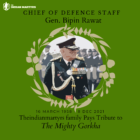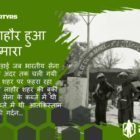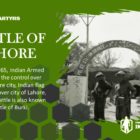|
Listen here
|

Major Rama Raghoba Rane was born on 26 June 1918 within the village of Haveri, Karwar district of Karnataka. He joined the British Indian Army at the age of 22, while the wave of the Second World War is about to come. The day after entering service with the Bombay Engineer Regiment on 10 July 1940, Major Rama Raghoba Rane passed out as the Best Recruit and received the Commandant’s Cane. Rane was promoted to Naik. and posted to the 28th Field Company of the 26th Infantry Division after his division failed the Arakan Campaign in Burma, alongside his two men, was hand-picked by his company commandant to remain back behind at Buthid Aung to destroy key assets of the enemy then be evacuated by the Royal Indian Navy. Although the objective was soon achieved, the expected pickup did not take place, and Rama Raghoba Rane and his men were forced to cross a river that was patrolled by Japanese soldiers. Rane, alongside his two men, expertly evaded the Japanese troops and reached Bahri successfully. For this courageous action, he was promoted from naik to havaldar.
The Indian Army recaptured Jhangar on 18 March 1948 after losing it to Pakistan in December 1947 and started moving towards Rajauri from the Naushahra sector. On 8 April 1948, the 4th Dogra Battalion of the Indian Army advanced to Rajauri.
In the course of the advance, the battalion captured Barwali ridge, eleven km north of Naushahra. As the battalion advanced beyond Barwali, it was hampered by roadblocks and minefields. The supporting tanks were also unable to cross the obstacles.
Rama Raghoba Rane led a section of the 37th Assault Field Company attached to the 4th Dogra Battalion to clear the way for the regiment. As Rane and his team were clearing a minefield, artillery fire from Pakistan killed two sappers and wounded five others, including Rane. In spite of this, by the evening of 8 April, Rama Raghoba Rane and his surviving men had cleared the minefield, allowing the supporting tanks to move forward. It was still necessary to prepare a safe route for the tanks since the road ahead was still hazardous for the advancement of the tanks. Major Rama Raghoba Rane created the lane during the night. The next day, his section worked for 12 continuous hours to clear mines and roadblocks. As the road was still too difficult to affect, he made a diversion for the battalion to forward. Rama Raghoba Rane continued this work despite ongoing artillery and artillery fire from the Pakistanis side.
On 10 April, before the sun rises Rama Raghoba Rane and his team resumed work on an obstacle that had not been cleared the previous night. In a short span of two hours, Rane and his team cleared the roadblock of 5 large pine trees within the midst of mines and machine-gun fire from the enemy side. After the road was cleared the 4th Dogra Battalion was all set to advance another thirteen kilometers in the enemy-occupied territory until it encountered another major roadblock. Pakistani enemy forces were situated on the adjoining hills and were able to see any movement by the side of the Indian forces and they open fire on any approaches to the block, making it very problematic for the Indian side. Rane drove a tank to the roadblock and took cover behind the tank while blasting open the roadblock.
The very next day, Rama Raghoba Rane and his team worked for another 17 hours to clear the way to Chingas, which lay halfway between Rajauri and Naushahra on an old Mughal route, and beyond. He contributed significantly to the Indian advance to Rajauri from 8 to 11 April. his work also saved many civilians in the area from Chingas and Rajauri, his work cost the Pakistani forces about 500 dead and many more wounded.
Rama Raghoba Rane remained in the Indian Army after the war until his retirement, with the rank of major, on 25 June 1958 he retired. In 1994, he passed away at the Command Hospital, Southern Command in Pune, leaving behind his wife, three sons, and a daughter.





